
Salix purpurea, the purple willow, purpleosier willow, or purple osier, is a species of willow native to most of Europe and western Asia north to the British Isles, Poland, and the Baltic States.
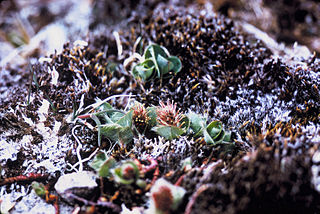
Salix arctica, the Arctic willow, is a tiny creeping willow. It is adapted to survive in Arctic conditions, specifically tundras.

Salix lasiolepis is a species of willow native to western North America.
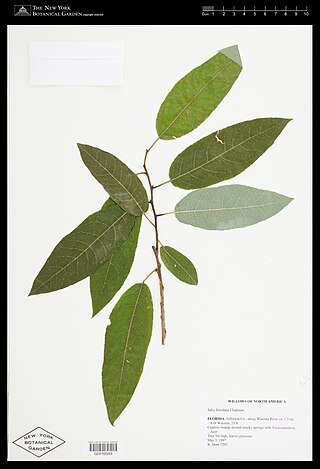
Salix floridana, the Florida willow, is a species of willow in the family Salicaceae. It is native to the southeastern United States in northern Florida and southwestern Georgia.

Salix tarraconensis is a species of willow in the family Salicaceae. It is endemic to Spain, where it grows in subalpine scree at 500–1,400 m (1,640–4,590 ft) altitude in Tarragona and Castellon.
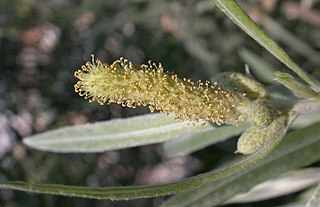
Salix exigua is a species of willow native to most of North America except for the southeast and far north, occurring from Alaska east to New Brunswick, and south to northern Mexico. It is considered a threatened species in Massachusetts while in Connecticut, Maryland, and New Hampshire it is considered endangered.
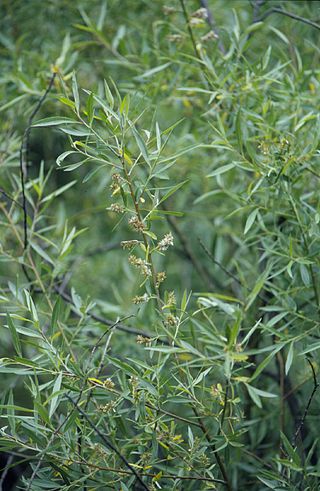
Salix geyeriana is a species of willow known by the common names Geyer's willow, Geyer willow and silver willow. The type specimen was collected by the botanist Karl Andreas Geyer, for whom it was named. Its conspicuous, yellow flowers begin to bloom as early as March, to as late as the end of June.
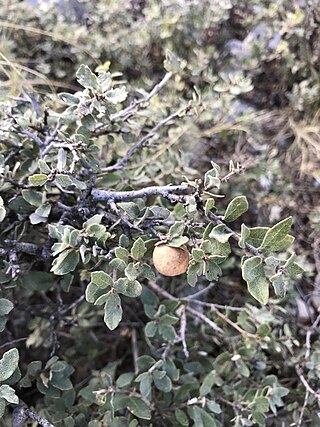
Quercus intricata, common name dwarf oak, intricate oak or Coahuila scrub oak, is a plant species native to northern Mexico and western Texas.

Salix commutata, the undergreen willow, is a plant species native to western Canada and the north-western United States. It has been reported from Alaska, Yukon, the Northwest Territories, British Columbia, Alberta, Saskatchewan, Montana, Idaho. Washington and Oregon. It grows on rocky alpine and subalpine slopes, conifer forests, stream banks, bogs, etc.
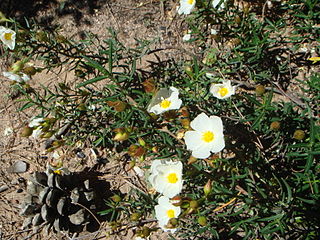
Cistus libanotis is a shrubby species of flowering plant in the family Cistaceae, with white flowers. It has been confused with Cistus clusii, which it resembles, resulting in some uncertainty in its distribution. It is endemic to the Iberian Peninsula.
Baccharis dioica is a North American species of shrubs in the family Asteraceae known by the common name broombush falsewillow. It is native to Florida, the Yucatán Peninsula, and the West Indies.

Prunus myrtifolia, called the West Indies cherry or myrtle laurel cherry, is a New World species of shrubs in the family Rosaceae.
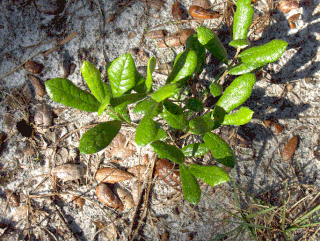
Quercus pumila, the runner oak or running oak, is a species of oak. It is native to the southeastern United States.

Salix glabra, the smooth willow, is a small shrub from the genus of willow (Salix). It is found in the mountainous areas of several European countries.
Salix balfouriana is a shrub or small tree from the genus of willow (Salix) with reddish black and tomentose hairy young twigs and up to 8 leaf blades, rarely 18 centimeters long. The natural range of the species is in China.

Salix breviserrata is a species of willow belonging to the family Salicaceae. It is found in southern Europe in the Alps, and in the Iberian Peninsula in the Cantabrian Mountains, especially in the Picos de Europa, Somiedo, and the Sierra and Valle del Híjar.

Salix caesia is a small shrub in the genus Salix, the willows. It is widespread, mainly in Asia.

Salix coggygria is a low shrub in the willow genus Salix with 1.5 to 4.5 centimeter-long leaf blades. The natural range of the species is in China.

Salix erioclada is a species from the genus of willows (Salix) and grows as a shrub or small tree. The leaf blades have a length of about 5 centimeters. The natural range of the species is in China.



















